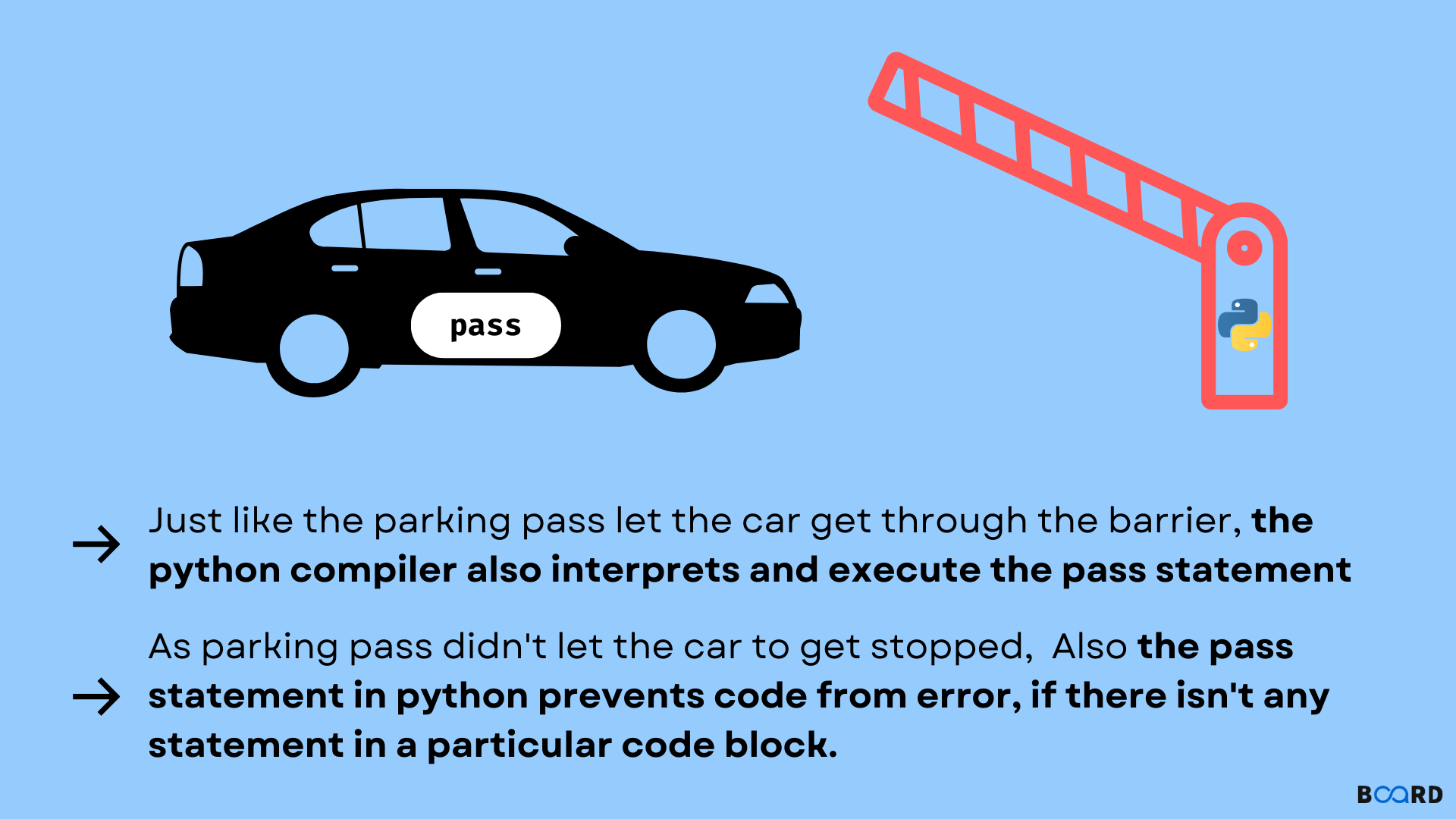Introduction
In Python, a pass statement is a null statement but the difference between a comment and a pass statement is that comment is ignored while the interpretation and pass statement is not ignored.
Syntax
Python pass Example
Now let us consider a case where a user is writing some code and suddenly hit a line like in loops, conditions, functions etc, where the user does not what to write. So simply, the user will place a pass and will go on, because they can not be left empty. So we use the pass to avoid these types of errors.
Example 1
In the above code, we used a pass statement in a function.
Example 2
In the above code, we used a pass statement in a class.
Example 3
n = 10
for i in range(n):
# When code is needed to be added later pass statement can be used as a placeholder
pass |
In the above code, we used a pass statement in a loop.
Example 4
x = 14
y = 50
if(x>y):
pass
else:
print("x<y") |
In the above code, we used a pass statement in an if-else conditional statement.
Example 5
l =[1,2,3,4,5]
for i in l:
if(i == 5):
pass
else:
print(i) |
In the above code, we used a pass statement in a loop that traverses in a list.
In python, when not sure what code to write, so for placeholder, we can write a pass statement there. We only need to place the pass statement there. We use the pass when we do not wish any code to get executed. In places where empty code is not allowed, there we can place a pass statement.
Some more examples
Example 6
s = {"Python", "Pass", "Statement", "Placeholder"}
for v in s:
if v == "Pass":
pass # leaving an empty if block using the pass keyword
else:
print("Not reached pass keyword: ", v) |
Output
Not reached pass keyword: Python
Not reached pass keyword: Placeholder
Not reached pass keyword: Statement |
Example 7
class Node:
pass
class SLinkedList:
def __init__(self):
self.headval = None
ll = SLinkedList()
ll.headval = Node("Mon")
e2 = Node("Tue")
e3 = Node("Wed")
list1.headval.nextval = e2
e2.nextval = e3 |
Output
We left the node inside the Node class, so we can write it in future. |
Example 8
class Node:
def __init__(self, value):
self.value = value
self.next = None
class Stack:
def __init__(self):
self.head = Node("head")
self.size = 0
def getSize(self):
return self.size
def isEmpty(self):
return self.size == 0
def peek(self): # Placing pass here and in the push method so we can write the code later
pass
def push(self, value):
pass
if __name__ == "__main__":
stack = Stack()
for i in range(1, 11):
stack.push(i)
print(f"Stack: {stack}")
for _ in range(1, 6):
remove = stack.pop()
print(f"Pop: {remove}")
print(f"Stack: {stack}") |
Output
In the above code, we used a pass statement inside the peek and push method, so we can use that space later to write their respective codes. |

